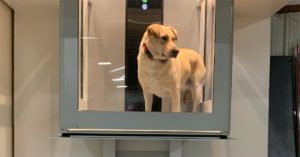Good, EZ Design: An Interview with Accessibility Designer Randy Sora
What is Accessibility design?
Architecture without barriers, inclusive, or accessible design are all different ways of referring to the same thing: buildings that can be accessed by all, despite any limitations on their mobility. A new trend we could not be more on-board with, this focus means people of all abilities are considered and accounted for in every stage of a new building’s design, meaning it will be used by all for decades to come.
However, accessibility is far from a new challenge, and steps need to be made to challenge it in new, but also in existing, designs. So, while it’s clear how new builds are being approached, what can be done to older buildings to open them up to everyone who may want or need to use them? That’s precisely the question answered by an accessibility designer…
What is an Accessibility Designer?
An accessibility designer is a person with an inclusive eye. Someone who knows the challenges faced, sees what’s causing these difficulties in a specific building and pinpoints how they can be overcome, either using technology or other architectural solutions.
As Canada becomes more inclusive, accessibility designers are growing in demand, sought out to help mould our homes and cities to meet our changing collective needs, so we sat down with one of the most respected accessibility designers in Southern Ontario to get his perspective on the market and one particular solution he often incorporates into his designs.

Introducing Randy Sora
Randy Sora is an accessible designer and owner of EZ Access Designs and has been making peoples’ lives easier for over 35 years. Having begun his career as an independent life consultant, he went on to work at the Workers Compensation Board – experiences that gave him a great deal of insight into the housing needs of those who have experienced catastrophic injury. A desire to meet this need is what set him on the path of a long and satisfying career helping bring back a feeling of “home” to people who have already lost so much.
Let’s dive into his experience and details on the process he follows to best serve his clients.
After years in the business and numerous projects, what do you look for in a vendor?
“I have always maintained that the most important thing is the after-market relationship between the client, contractors and vendors. I deal with families who, for the most part, have gone through traumatic events that change their lives and their housing. As such, they are not looking past the next few weeks or the beyond the project being completed. They need to be reminded that maintaining their accessibility equipment is paramount as they continue with their lives. So, a vendor needs to understand that their services are equally important as the clients’ needs.”
What do you look for in a product?
“That’s easy. I want a product that works and lasts – that’s all everybody wants, right? But when you’re talking accessibility, it’s crucial because of the safety and security needs of the person using the equipment.
So, durability is certainly a primary issue, as is ease of use whether it be sizing, electronics or controls – these all contribute to the client’s ability to be happy with their independence.”

You have used Hoistless lifts – Homelifts - in many designs; what do you find beneficial in them?
“For my clients, many of which use mobility devices, wheelchairs, in particular, it is required that a Homelift be able to carry the person and their equipment – simple stuff. However, what is sometimes difficult in existing homes is finding the suitable space to create the required space for, say, a full-size residential elevator.
In these cases, a Homelift opens up other innovative alternatives that can fit into the existing architecture and still allow freedom of movement. Often, they can also lead to savings because the cost of construction can be better controlled, and the structural design doesn’t need to be as robust. I often see Homelifts in smaller footprints, townhomes and row houses. They are a versatile alternative, and, as you mentioned, I have made good use of them in my designs over the years.”
When it comes to talking about accessibility, no matter the circumstances, there’s no one better than an expert in the field to point you in the right direction to meet your specific needs – especially one who has helped so many people get their freedom of movement back. Thanks, Randy; it’s always a pleasure speaking with you!

Brian Granger
1-866-208-1806
sales@homelifts.ca
To learn more about our Homelifts or these financial programs, contact Brian today for your free in-home consultation to see if a Homelift is the right product for you to ensure you can stay in your home for as long you want.






